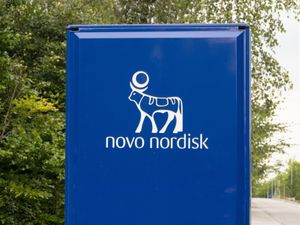Washington, D.C., Oct. 15, 2025 (GLOBE NEWSWIRE) -- Nine in ten parents are satisfied with the afterschool program their child attends, and there is overwhelming support for more funding for afterschool. But unmet demand is painfully high in all 50 states, with majorities of middle- as well as low-income families who want afterschool programs shut out.
The parents of 29.6 million children, more than half the school-age students in the United States, want afterschool programs for their children – but just 7 million are currently enrolled. Another 22.6 million children would attend afterschool programs if they were available. That means three in four of the children (77%) whose parents want to enroll them in an afterschool program are being left behind. Cost, availability, and accessibility are the barriers families cannot overcome.
Those are among the findings from the fifth edition of America After 3PM, released today. Commissioned by the Afterschool Alliance and conducted by Edge Research, the new study is based on a survey of 30,515 U.S. parents of school-age children who live in their households. It examines 20 years of data and is the first afterschool household survey conducted post-pandemic.
It finds a wide, and widening, opportunity gap. Children in low- and middle-income families are more likely to be without the afterschool programs their parents want for them (84% and 73%, respectively) than children in high-income families (59%). Families in the highest income bracket now spend approximately nine times as much per year on out-of-school time activities as families in the lowest income bracket, up sharply from five times as much five years ago.
“Families at all income levels want afterschool opportunities and those with resources invest heavily in afterschool programs and activities. But it’s concerning that, after adjusting for inflation, afterschool spending by families in the lowest income bracket has decreased since 2020, while spending by families in the highest income bracket has grown, exacerbating inequities,” said Afterschool Alliance Executive Director Jodi Grant. “Afterschool programs give students a safe place to go after the school day ends, boost their academic achievement, help address the youth mental health and chronic absenteeism crises, provide alternatives to screen time, give working parents peace of mind that their children are safe and supervised, and more. Our country will be stronger and more successful when all children can take advantage of what afterschool programs offer – but, sadly, this study shows we’re nowhere near reaching that goal. We need greater support from federal, state, and local governments, businesses, and philanthropy. Every child deserves access to a quality afterschool program.”
“Afterschool programs foster resilience, build essential skills, and provide safe, supportive spaces for learning and growth while helping parents work and growing the economy,” said Heather Nesle, president of the New York Life Foundation (NYLF) and board member of the Afterschool Alliance. “That’s why, over the last nine years, the NYLF Aim High initiative has awarded $13.35 million to afterschool programs serving middle school youth. Afterschool programs support families, strengthen our communities, and help give every child the opportunity to succeed.”
Other findings from America After 3PM 2025:
Access is uneven by age, race, and community type.
- More than half the elementary schoolers not in an afterschool program (58%) would be if a program were available, as would 49% of middle school students, their parents say.
- 65% of Black, 60% of Hispanic, 55% of Asian American, 53% of Native American, and 46% of White children not in an afterschool program would be enrolled if a program were available – and unmet demand among Black, Hispanic and Native American children grew from 2020 to 2025.
- Unmet demand is higher in urban than in suburban and rural communities (65%, 45% and 43%, respectively).
Cost is the greatest challenge for families whose child is not in an afterschool program.
- 56% cite cost as an important factor preventing them from enrolling their child.
- These parents cite accessibility as another primary barrier, with 49% saying their child does not have a safe way to get to and come home from afterschool programs and 48% saying program locations are inconvenient.
- Four in ten of these parents (42%) report a lack of programs in their communities.
- Half of parents who were able to enroll their child agree it is difficult to afford and 24% report their child was on a waitlist prior to enrollment.
Demand varies by state.
- Overall, demand for afterschool programs is highest in D.C. followed by New York, Massachusetts, California, and Florida.
- Across the nation, the highest percentages of unmet demand for afterschool programs are in D.C. (68%), Massachusetts (64%), New York (63%), Maine (58%), and Alaska (57%).
- Afterschool program participation is highest in D.C. (38%), Hawaii (23%), California (19%), New York (19%), and Connecticut (18%).
Satisfaction among parents with students in afterschool programs is high.
- Nearly all parents are satisfied with their child’s afterschool program (95%) and rate the quality of the program as excellent, very good, or good (97%).
- Most parents are happy with the opportunities for reading or writing and time to experience the outdoors (both 77%), healthy snacks and meals (75%), and homework help (72%) their child’s program provides; and are satisfied the program helps their child develop social skills (90%); work on communication, teamwork, critical thinking, and leadership (82%); learn responsible decision-making (82%); and build confidence (86%).
Parents recognize the benefits for children: safety, skills, school engagement, and well-being.
- The percentage of parents who agree that afterschool programs keep kids safe and out of trouble grew from 66% in 2014 to 78% now.
- More than 8 in 10 parents agree that afterschool programs provide opportunities to learn life skills, like interacting with peers and responsible decision making (85%) and help children develop teamwork, critical thinking, and leadership skills (83%).
- Three-quarters of parents (75%) agree that afterschool programs help children become more excited about learning and interested in school, helping them improve their attendance in and attitude toward school.
- Large majorities of parents agree that afterschool programs support children’s mental health and well-being (79%) and allow them to develop positive relationships with other students (84%).
Parents say afterschool programs support working families.
- 85% say programs provide working parents with peace of mind knowing that their children are safe and supervised, and 84% agree these programs allow them to keep their jobs or work more hours.
- 88% of parents with a child in an afterschool program say that it boosts their productivity and 92% say they are less stressed knowing their child is safe.
Parents want more public funding for afterschool programs.
- 89% of parents favor public funding for programs that provide afterschool opportunities to students in communities that have few opportunities for children and youth. This is a steady increase from 83% in 2009, 84% in 2014, and 87% in 2020.
- Support is the highest among Black families (92%), families in urban communities (92%), households where both parents work (91%), and working moms (90%).
The new study has significant policy implications and identifies opportunities for improvements, including:
- Increase funding for afterschool programs through a range of federal programs, state and local funding, and funding from philanthropies and businesses in order to improve program availability and access for families.
- Remove barriers that prevent children from participating in programs, such as lack of transportation. Nearly half of parents say an important factor in not enrolling their child in a program is that there is not a safe way to get to and from the program, and that locations are inconvenient. With more resources, steps can be taken to address these problems.
- Invest in afterschool program staff to reduce turnover and help program leaders attract and retain qualified, caring staff members by paying them fair wages, providing reasonable benefits, offering professional development opportunities, and more.
This fifth edition of America After 3PM is based on a survey of 30,515 U.S. parents or guardians with a school-aged child living in their household, with at least 200 interviews completed in all 50 states and Washington, D.C. It was conducted in English and Spanish using a mixed-mode methodology to reach as many households as possible. Data was collected between January 31 and April 21, 2025. The margin of error for the child- and household-level data is +/- < 1 percent. Previous America After 3PM surveys were conducted in 2004, 2009, 2014, and 2020.
America After 3PM 2025 is made possible through the Afterschool Alliance’s partnership with the New York Life Foundation.
The Afterschool Alliance is a nonprofit public awareness and advocacy organization working to ensure that all children and youth have access to quality afterschool programs. More information is available at www.afterschoolalliance.org.
Inspired by New York Life’s tradition of service and humanity, the New York Life Foundation has, since its founding in 1979, provided over $470 million in charitable contributions to national and local nonprofit organizations. The Foundation supports programs that benefit young people, particularly in the areas of educational enhancement and childhood bereavement. The Foundation also encourages and facilitates the community involvement of employees and agents of New York Life through its Volunteers for Good program and Grief-Sensitive Schools Initiative. To learn more, please visit www.newyorklifefoundation.org.

Name: Magen Eissenstat Email: magen@prsolutionsdc.com Job Title: Media Contact






